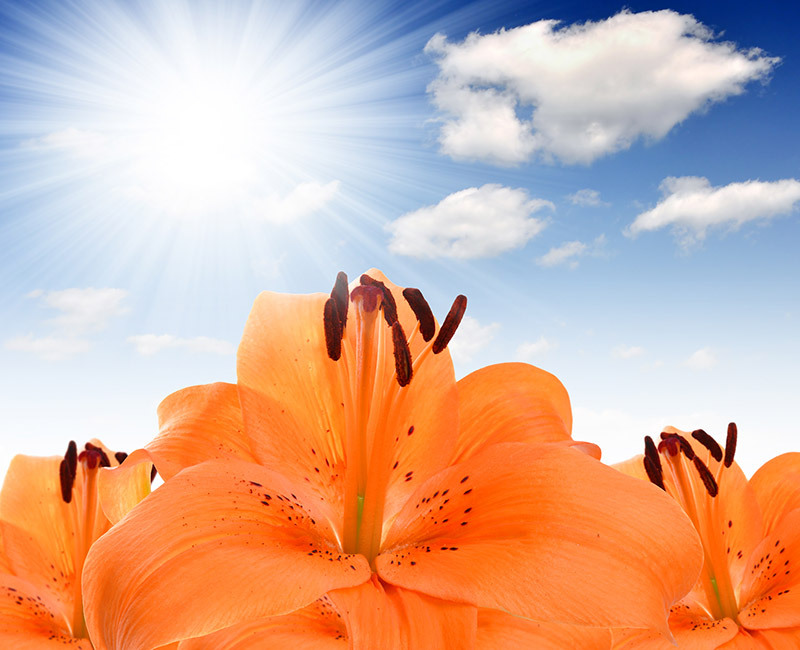Tulip Tidbits: 7 Surprisingly Unknown Facts to Share
Posted on 04/07/2025
Tulips are more than just beautiful springtime flowers; they hold an enthralling history, unique traits, and vast cultural significance. While many people cherish their radiant hues and delicate petals, few know the secrets hidden behind these iconic blooms. This article explores the most surprisingly little-known facts about tulips, providing you with remarkable stories and insightful details to brighten both your garden and knowledge base.
Why Are Tulips So Fascinating?
The tulip has captured the hearts of flower lovers, artists, and even economists across centuries. Their simple yet elegant form is often associated with messages of love, renewal, and prosperity. But what truly sets tulips apart is the fascinating web of history, science, and symbolism that surrounds these popular spring blooms. Before delving into the most interesting tulip facts, let's explore why tulips are much more than just another flower.
- Centuries of cultivation have produced over 3,000 varieties.
- Symbolic meanings--from declarations of love to the rites of spring.
- Iconic status in art, global horticulture, and even economic bubbles!

7 Surprisingly Unknown Facts About Tulips
1. Tulips Weren't Always Dutch: Their Asian Origins
When most people think of tulips, images of vibrant Dutch fields come to mind. However, the earliest tulips didn't originate in the Netherlands. Tulips are native to Central Asia, particularly in the area stretching from the Tien Shan mountains to the steppes of Kazakhstan, Uzbekistan, and even northern China. These wild species thrived in tough, windswept climates long before they became emblematic of Dutch culture.
Key Takeaway: The Dutch merely perfected tulip cultivation. The flower first traveled westward during the 16th century, after being prized by Ottoman sultans for their unique shape and vibrant color. 'Tulip' itself is derived from the Persian word 'dulband', meaning turban, in reference to its headwear-like appearance.
2. Tulip Mania: The World's First Financial Bubble
In the 17th century, the Netherlands experienced "Tulip Mania"--a period when tulip bulbs became so valuable that they served as a form of currency. Some rare varieties sold for more than the cost of a canal house in Amsterdam!
- At the peak, one single tulip bulb could be traded for land, livestock, or entire fortunes.
- The bubble burst in 1637, devastating many investors who had bet their savings on the tulip market.
Fun Fact: Historians often cite Tulip Mania as the first recorded speculative bubble, with many modern economic comparisons referring back to this era. It shows just how far people's passion for the tulip flower once went.
3. Colorful Chemistry: How Tulips Get Their Vibrant Hues
One of the most intriguing tulip tidbits is the science behind their stunning colors. Did you know that tulips exhibit more color variations than most other spring flowers? Their palette is shaped by fascinating quirks of biology:
- Anthocyanins: These natural pigments produce most of the reds, purples, and blues.
- Carotenoids: Responsible for yellows to oranges.
- White tulips lack pigment altogether!
- Some of the famous "broken" tulip patterns result from a benign mosaic virus present in the plant, producing eye-popping streaks and variegations.
Did you know? The rarest tulips are the ones with true blue petals--something plant breeders are still striving to achieve using advanced crossbreeding and genetic modification.
4. The Annual Tulip Festival: A Worldwide Celebration
From the famed fields of Keukenhof in the Netherlands to the sweeping displays of Canada and the United States, tulip festivals have become a global tradition. While the Dutch are justifiably proud of their floral heritage, these festivals offer worldwide opportunities to enjoy tulip beauty:
- Keukenhof Gardens: Known as the "Garden of Europe," displaying more than 7 million bulbs every spring.
- Canadian Tulip Festival: Ottawa's tribute stems from the Dutch royal family's gift of tulips in gratitude for shelter during WWII.
- Skagit Valley Tulip Festival: The Pacific Northwest's own celebration, drawing half a million visitors annually.
These events encourage appreciation for tulip diversity while boosting tourism and fostering cross-cultural ties.
5. Surprising Tulip Edibility: Flowers on Your Plate
Here's a tulip tidbit that surprises almost everyone: Parts of the tulip plant are actually edible! During World War II, when food was scarce in the Netherlands, people resorted to eating tulip bulbs for survival. Although not generally recommended today due to potential toxicity, the petals of some varieties can be used as an edible decoration on cakes and salads--just be sure they haven't been treated with pesticides.
Pro Tip: While tulip bulbs look similar to onions and are starchy, they should never be consumed raw due to harmful compounds in certain varieties. Always ensure the flower is safe before using it in culinary creations.
6. Secret Tulip Language: What Do Tulip Colors Symbolize?
Each color of tulip bloom comes wrapped with its own special meaning. The Victorians particularly loved "floriography" or the language of flowers, where a bouquet's hidden message could speak volumes.
- Red Tulips: Declaration of true love and passion.
- Yellow Tulips: Once signified jealousy, but now represent cheerfulness and sunny thoughts.
- Purple Tulips: Royalty, luxury, and elegance.
- White Tulips: Purity, forgiveness, and new beginnings.
- Variegated tulips: Admiration and "you have beautiful eyes."
So next time you present someone with tulips, remember that the color choice carries a subtle yet powerful message.
7. Tulips Sleep at Night: The Flower's Circadian Rhythm
Perhaps the most enchanting secret about tulips is their sensitivity to light. Like many living creatures, tulips have a circadian rhythm. At night or on cloudy days, their petals close lightly to protect their reproductive parts and conserve energy. When morning sunlight returns, they open again for pollinators and beauty seekers alike.
This dance with the sun helps:
- Conserve moisture and shield delicate stamens from cold and dew.
- Control temperature around the flower's inner parts.
- Synchronize blooming with the most active hours of pollinators.
Floorspace in a garden is precious, and planting tulips ensures a daily spectacle: Each sunrise reveals a field of opening flowers, each sunset a gentle folding in.
Bonus: Easy Tulip Care Tips for Your Own Garden
If these tulip tidbits have inspired you, why not create your own dazzling display at home? Here's how to get started:
- Choose quality bulbs: Look for plump, firm bulbs without signs of mold or soft spots.
- Plant in fall: Tulips need a winter chilling period in most climates; plant 6-8 weeks before your ground freezes.
- Well-drained soil: Prevent rot by avoiding soggy ground. Sandy loam is best.
- Sunlight matters: Most tulip varieties love full sun, though some tolerate light shade.
- Feed and water: A little bone meal in planting holes and occasional watering helps set buds for next year.
- Remove spent blooms: Snip off fading flowers, but let leaves wither naturally--they store energy for next year's growth!
Pro gardening secret: For a layered "lasagna" effect, plant early, mid, and late-season tulip bulbs in the same bed for weeks of continuous color.

Conclusion: Tulips Beyond the Surface
Tulips are more than just a sign of spring--they're emblems of history, innovation, art, and resilience. These seven hidden tulip facts highlight how much there is to discover when you look deeper. Whether you're drawn to their origins in the wild steppes of Central Asia, curious about their dramatic economic saga, or simply thrilled by their intricate beauty and symbolism, tulips offer endless stories worth telling.
Share these tulip tidbits with friends, family, and fellow gardeners--because behind every vibrant bloom lies a treasure trove of surprising secrets waiting to be uncovered.
Frequently Asked Questions about Tulips
- Are tulips easy to grow for beginners?
Yes! With well-drained soil and a sunny spot, tulips are surprisingly low maintenance for such a showy flower. - Why do my tulips flop over or fail to return?
Tulips may need a cold winter, good drainage, and a rest period after flowering. Some hybrid varieties are less perennial than species types. - Can I grow tulips indoors?
Forcing tulip bulbs is possible, but they will need a period of cold stratification (in the fridge) before being brought to light and warmth. - Do tulips have any fragrance?
Some older and species tulip varieties offer a delicate perfume, but most modern hybrids are bred for color, not scent.
Ready to transform your knowledge about tulips beyond the ordinary? Celebrate these fascinating facts, and let your next spring garden become a living testament to their timeless allure!
Latest Posts
How Red Roses Became a Valentine's Day Staple
Quick and Easy Flower Preservation Methods Revealed
Discover Resilience in Top 12 Durable Blooms





